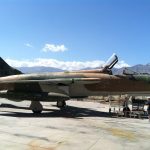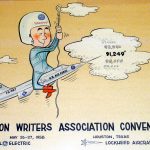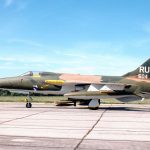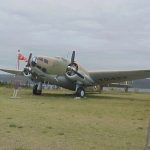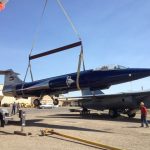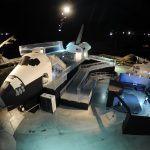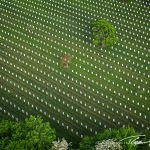By Keegan Chetwynd, Director of the CAF Airpower Museum
For those of us who love aviation history, there is a special reminiscence associated with the Century Series fighter aircraft, similar to how others reflect on the automobiles of the same era. Each of the aircraft in the series grew to become an icon. And though many continued in service with a variety of other nations in the years afterward, these aircraft will always have a specific connection to a time when the U.S. Air Force was in need of a world-beating stable of aircraft, a time when multi-role mission capability would not be bound up completely in one single platform.
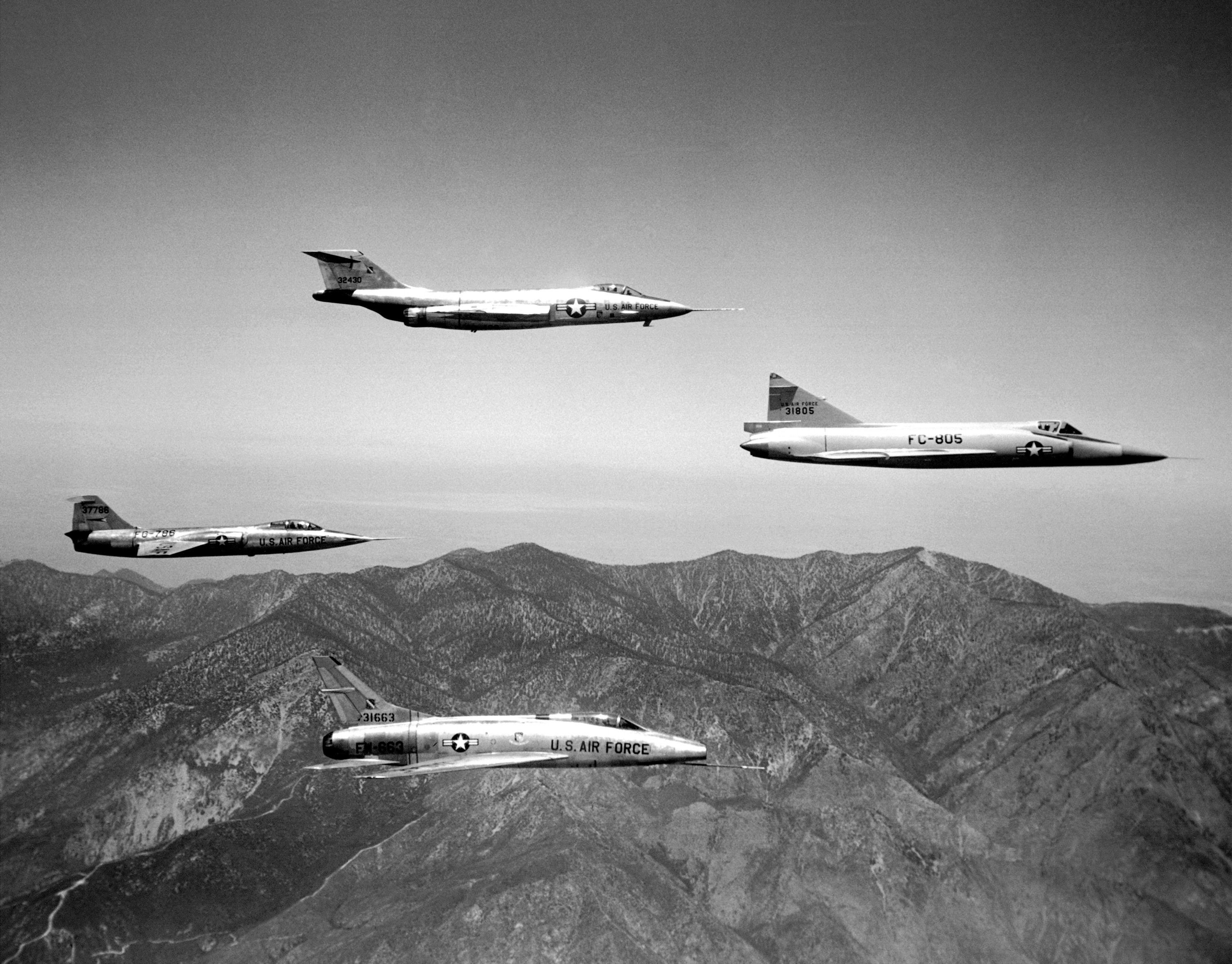
Convair F-102A-20-CO Delta Dagger (53-1805, right), North American F-100A-20-NA Super Sabre (53-1663, bottom). ( Image by NACA Dryden Flight Research Center via wikipedia)
After the shocking experience of the Korean War, it became apparent to the Air Force command structure that even though our American pilots had bested the enemy as a function of superior capabilities and training, they had not always been flying aircraft that had the upper hand in each situation. Certainly, the F-86 Sabre was a capable airplane and remains treasured to this day by those who flew it. But the Soviets made it abundantly clear that their cheaply produced MiG-15 was a force to be reckoned with. American aircraft firms and their engineers returned to the drawing boards, and from the stable that had issued the P-51 Mustang and the F-86 Sabre sprang a new thoroughbred, the NA-180. The NA-180 design would become the F-100 Super Sabre when the Air Force accepted it in 1951. Alongside the McDonnell F-101 Voodoo, Convair F-102 Delta Dagger, Lockheed F-104 Starfighter, Republic F-105 Thunderchief, and the Convair F-106 Delta Dart, the aircraft would come to be enormously symbolic of “Air Force thinking” during the period.
The F- (fighter) numerical designators that the U.S. Air Force used were simply a continuation of the P- (pursuit) designations that had been in use for many years, and as such, the F-100 designation was not a radical departure from normal sequence of numbering but was actually the next unused number in the sequence. Some of you might be saying, “Hold on! There is no F-98 or an F-99.” Except that there was. Pouring over your experimental aircraft books will not reveal what these aircraft were, but look no further than a curious decision taken in the years after World War II where it was decided that missiles should also share fighter designations. The mighty F-98 was the Hughes AIM-4, the U.S. Air Force’s first guided air-to-air missile system. The F-99 was in fact the CIM-10 Bomarc missile.
Though the numbering system that led to the Century Series was not a radical departure from convention, their designs certainly were. Each of the aircraft, before becoming an operational combat platform, would set records, and the next aircraft to issue forth into the Cold War environment would invariably smash records. The technological developments born of this development initiative have had long lasting impacts that permeated beyond the world of aerodynamics. Each and every one of the aircraft when developed was on the cutting edge of performance and avionics. The F-100A, progenitor of the series, while plagued with instability issues as a function of its wing, was the first operational fighter to achieve supersonic flight at level attitude, and saw the wholesale application of an afterburner. The F-101 became the first operational American aircraft to exceed 1,000 mph, and the F-102 was the first aircraft to take advantage of the Area Rule concept, which decreases drag over an airframe approaching transonic boundary speeds. The F-102 was the first interceptor in the series and would eventually be equipped with nuclear tipped air-to-air missiles, which would allow it to break up imagined Soviet bomber formations. The F-102 pilots at that time would become the only Americans on the planet — outside of the presidency — with independent nuclear weapon release authority.
The fighter-bombers and interceptors within the Century Series were connected in their common purpose of establishing air superiority no matter the nature of the next war, and their uses were harsh. Certainly, in the event of a wholesale war with the Soviet Union, the deployment of nuclear weapons would have invalidated the concept of a tactical battlefield, and thereby rendered the fighter-bombers somewhat unnecessary. However, the low intensity conflicts raging around the world at the time saw the interceptors standing lonely vigil in a world devoid of large-scale bombing raids.
It is often said that the U.S. Air Force was unprepared with the correct sort of aircraft for the war in Vietnam, but it might be more accurate to say that with a host of new platforms in service, it was a question of determining which platforms had strengths that could be capitalized upon. In a 1962 Air Force film called “TAC on Target” the Century Series is laid bare, and curiously, the F-104 is counted among the fighter-bombers. When it makes its pass and deploys a single Napalm canister, it is obvious even to a casual observer that the F-104 is perhaps not on par with the other aircraft being demonstrated in the film as a ground support platform. Because they were simply utilized in a more public fashion, the fighter-bomber members of the series are perhaps better known; if the interceptors had ever been the central focus of a conflict, it would certainly have been a strategic nuclear exchange likely leaving us unable to appreciate them as the darlings of their own sort of war.








